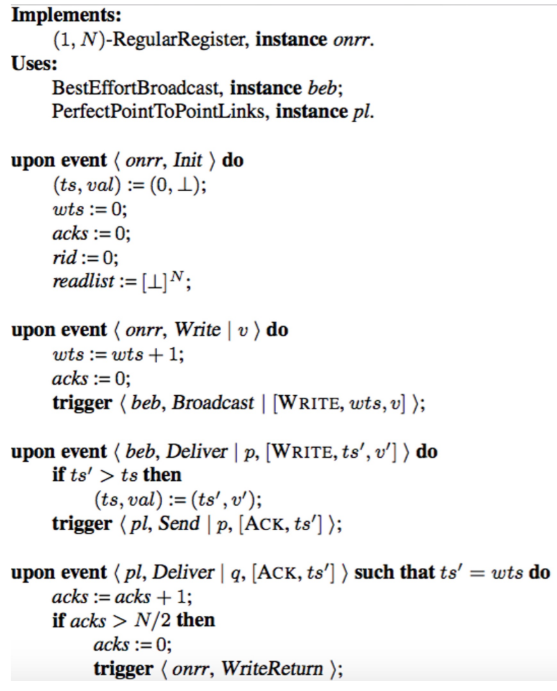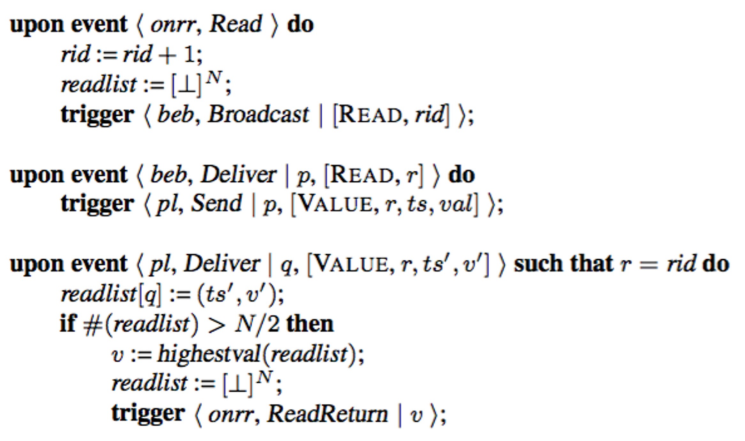Distributed Registers
In this note, we talk about different ways to implement a distributed register, both in the arbitrary model and in a Byzantine model.
Register Types
In this section we will present some different types of registers, and explain each one. The types of registers are:
- Regular Register
- Atomic Register
- Byzantine Read/Write Regular Register
- Byzantine Read/Write Atomic Register
Whenever in this note it is referenced , corresponds to number of writers, and corresponds to the number of readers. can be any type of register
Regular Register
Regular Registers are characterized by the following two properties:
- Liveness: If a correct process invokes an operation, then that operation eventually completes
- Safety: Read must return either:
- The last written value if there is no concurrent transaction
- The last written value, or any concurrently written value
We will describe the implementation of one type of regular registers, (1,N)-Regular Registers.
(1,N)-Regular Register
This version of regular register assumes only one process can write to the register, and it uses Best-effort Broadcast and Perfect Links.
We assume each process maintains:
- <ts, val> - Current value and associated timestamp
- readlist - List of returned values, for reading
- rid- Id of current read operation
The writer also maintains:
- wts - Next timestamp to be written
- acks - How many writes have been acknowledged
Lastly, regular registers should be able to tolerate up to crash faults.
Algorithm
The algorithm for this type of register is this:


Fig.1: Algorithm of (1,N)-Regular Register
Correctness
Liveness: Any Read() or Write() eventually returns a value, if there exists a quorum of correct processes, and the liveness properties of the channel are verified.
**